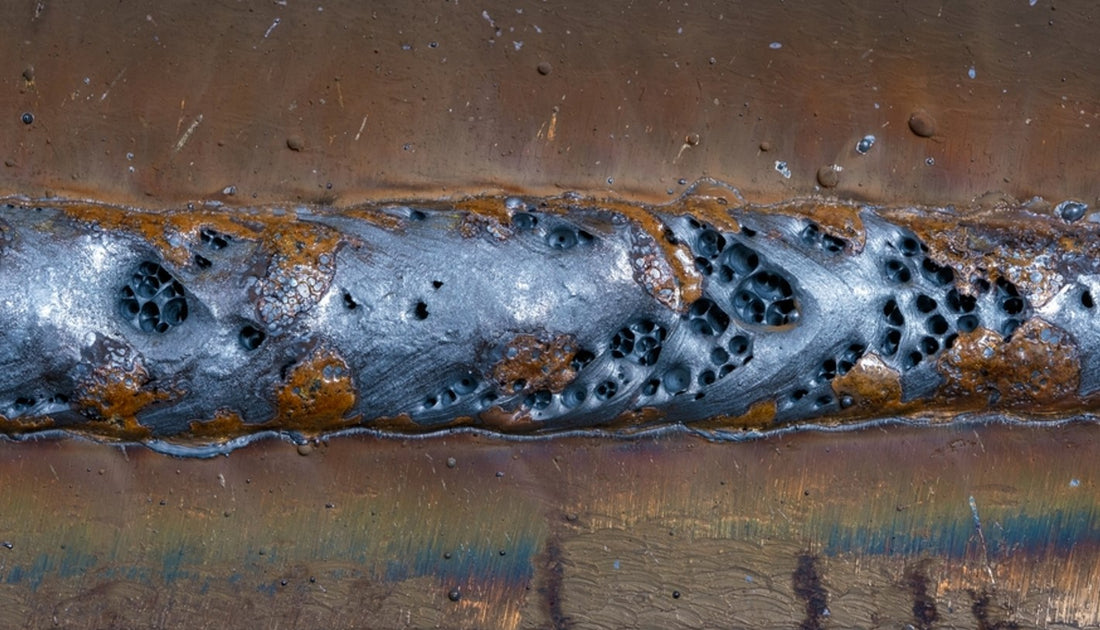Porosity in Welding: Identifying Common Issues and Implementing Finest Practices for Prevention
Porosity in welding is a prevalent concern that frequently goes undetected until it triggers significant troubles with the stability of welds. In this discussion, we will discover the crucial elements adding to porosity development, analyze its destructive results on weld performance, and go over the best techniques that can be adopted to minimize porosity incident in welding procedures.
Typical Root Causes Of Porosity

Using filthy or wet filler products can introduce contaminations right into the weld, adding to porosity concerns. To mitigate these common reasons of porosity, thorough cleansing of base metals, correct protecting gas selection, and adherence to optimal welding specifications are necessary practices in attaining top notch, porosity-free welds.
Influence of Porosity on Weld Top Quality

The presence of porosity in welding can substantially jeopardize the structural integrity and mechanical residential or commercial properties of bonded joints. Porosity produces gaps within the weld steel, compromising its general stamina and load-bearing ability.
Among the key repercussions of porosity is a decrease in the weld's ductility and sturdiness. Welds with high porosity levels tend to display reduced effect toughness and lowered capability to warp plastically before fracturing. This can be particularly worrying in applications where the bonded parts are subjected to vibrant or cyclic loading conditions. Porosity can hamper the weld's ability to properly transmit forces, leading to premature weld failure and prospective security threats in essential structures. What is Porosity.
Best Practices for Porosity Prevention
To improve the architectural integrity and quality of welded joints, what details procedures can be applied to minimize the incident of porosity during the welding procedure? Porosity avoidance in welding is crucial to ensure the honesty and strength of the final weld. One efficient technique appertains cleansing of the base steel, removing any contaminants such as corrosion, oil, paint, or dampness that might cause gas entrapment. Making certain that the welding tools remains in great condition, with tidy consumables and proper gas flow rates, can also significantly lower porosity. In addition, keeping a steady arc and controlling the welding criteria, such as voltage, present, and travel rate, helps produce a consistent weld swimming pool that lessens the danger of gas entrapment. Making use of the right welding technique for the specific product being welded, such as changing the welding angle and weapon placement, can further prevent porosity. Regular examination of welds and prompt removal of any issues identified during the welding process are important techniques to stop porosity and produce top notch welds.
Relevance of Correct Welding Methods
Executing appropriate welding methods is vital in making certain the architectural integrity and top quality of bonded joints, developing upon the foundation of reliable porosity avoidance actions. Too much warm can lead to raised porosity due to the entrapment of gases in the weld pool. In addition, utilizing the ideal welding specifications, such as voltage, existing, and travel rate, is essential for accomplishing sound welds with minimal porosity.
Furthermore, the choice of welding process, whether it be MIG, TIG, or stick welding, need to line up with the specific needs of the project my link to ensure optimal results. Appropriate cleaning and prep work of the base metal, as well as selecting the ideal filler product, are additionally vital parts of proficient welding methods. By adhering to these ideal methods, welders can minimize the threat of porosity formation and generate high-quality, structurally sound welds.

Examining and Quality Assurance Procedures
Quality assurance measures play a vital function in confirming the integrity and reliability of welded joints. Examining treatments are necessary to spot and protect against porosity in welding, making certain the stamina and sturdiness of the end product. Non-destructive screening methods such as ultrasonic screening, radiographic testing, and visual inspection are generally employed to determine possible defects like porosity. These methods permit the evaluation of weld high quality without endangering the integrity of the joint. What is Porosity.
Performing pre-weld and post-weld assessments is also critical in maintaining top quality control requirements. Pre-weld inspections include confirming the products, equipment setups, and sanitation of websites the workplace to avoid contamination. Post-weld evaluations, on the various other hand, assess the final weld for any defects, including porosity, and verify that it fulfills defined requirements. Executing a detailed quality control plan that consists of thorough testing procedures and inspections is vital to reducing porosity concerns and making certain the overall quality of bonded joints.
Verdict
In conclusion, porosity in welding can be an usual concern that affects the top quality of welds. By determining the typical reasons for porosity and executing ideal techniques for avoidance, such as proper welding strategies and testing procedures, welders can make sure excellent quality and reputable welds. It is vital to focus on visit this site avoidance approaches to lessen the occurrence of porosity and keep the integrity of welded structures.